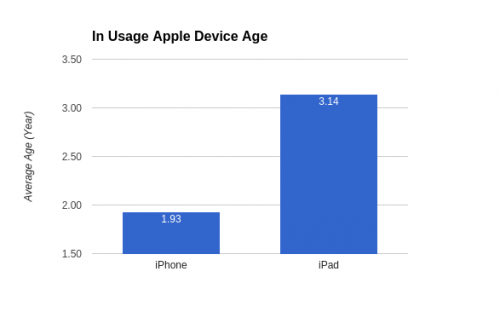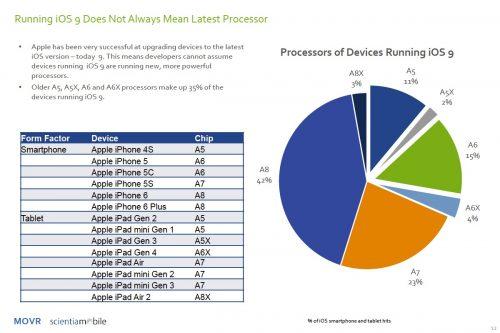I was listening to a webinar the other day about RUM (Real User Monitoring). Through RUM, it was clear that iPads performed worse than iPhones and desktops on a given site. Performance meaning general speed of rendering.
Speculation among the audience was that if this is because iPads are generally older than smartphones and for that reason had slower CPUs and maybe even an older version of the OS.
Diving into the MOVR data from ScientiaMobile I can confirm that this is true.
Looking at data from Q1 2016 iPhones in use are on average almost 2 years old. While iPads are more than 3 years old on average. The life time of a tablet is higher than a phone.
This also mean that even if a device, phone or tablet, runs the latest fashion OS version, it may have an old processor.
Furthermore, if a device seem to have a new and capable OS and is passing feature tests, the old hardware may reduce the perceived performance, loading- and rendering time.
Knowing about the real capabilities of a device really makes sense here. When you know that the requesting device is an iPad Mini 2, not an iPad Mini 4 you can optimize the page accordingly. This is why I am not a fan of «user agent sniffing» (Yeah, not the same as device detection). Services like wurfl.js can help with this.
MOVR q3 2015 we had a look at the actual CPUs hiding behind the latest and greatest iOS version.
And this is only for devices running iOS 9! Seems like this is mainly an iOS issue since Apple does a much better job upgrading their devices than Android does.
Still, the takeaway should be: Latest OS does not mean that the device is capable of latest fashion.

